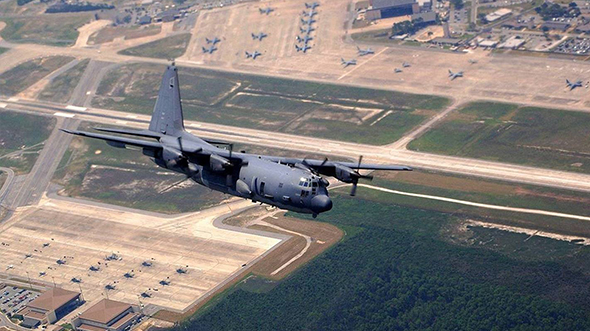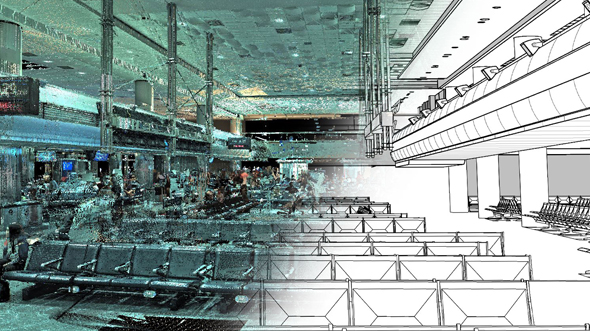
BLOG
—
Woolpert’s Blueprint for Military Planning
Woolpert is fortunate to have worked for many years with the federal government and the U.S. Armed Forces, providing a wide range of architecture, engineering and geospatial services. One of our key deliverables is military planning, which covers a very broad spectrum of
project types.
Recently, I was asked to define the scope and gravity of military planning and why planning for the U.S. Department of Defense (DoD) is important. In general, planning is the first step of the process for facilities to be constructed on an installation. Planning lays the foundation for each construction project by orchestrating appropriate land use distribution, ensuring environmental compliance and planning for quality of life amenities for service members and their families.
There are roughly 500 U.S. military bases, or installations, worldwide. They are self-sustaining, secure communities that operate like small cities, with housing developments, schools, parks and many facilities. Populations include active-duty personnel who perform training and day-to-day operations, their dependents and spouses, reservists and civilian personnel who work at the installation.
Military installations have their own police, fire and emergency management services, with public works departments that maintain facilities and critical infrastructure systems. Medical, financial, recreational, entertainment and retail services are available at most military installations and people live, learn, work, train and play at these sites around the world. Successful long-range planning supports and protects the health, safety, welfare and morale of the installation populations and surrounding communities.
Millions of Acres, Billions of Square Feet
The DoD coordinates and supervises all agencies directly related to national security and the U.S. Armed Forces. The DoD is the largest employer in the world. Its Military OneSource program in 2018 reported approximately 1.3 million active duty personnel, 1.5 million dependents, 800,000 civilian personnel and 1 million reservists.
The DoD also is the world’s largest landlord, with over 27 million acres of land and more than 550,000 facilities totaling 2.2 billion square feet. These facilities have a replacement value reported to be over $1 trillion. Military installations include culturally significant sites, and many have buildings on the National Register of Historic Places (NRHP). The DoD is responsible for the management and protection of the approximately 400 Threatened and Endangered Species, managed by the Bureau of Land Management, found on DoD-owned property. Sustainability of the natural and built environment is critical to the DoD and an important aspect of military planning.
Each U.S. military installation is unique due to its assigned mission, location and population. Every installation has a planning department that coordinates development inside and outside of the secured perimeter. Military installations are employment and economic drivers for their local communities and coordinated planning efforts are paramount to ensure adequate access, safety and quality of life amenities are available and preserved. Proper planning also leads to the prudent expenditure of funds for routine maintenance of existing facilities and overall installation sustainment.
To ensure each U.S. military installation is properly and consistently planned, standardized and coordinated with the local communities, the U.S. Army Corps of Engineers (USACE), the Naval Facilities Engineering Command (NAVFAC) and the Air Force Civil Engineer Center (AFCEC) provide guidance and oversight. These organizations support each site appropriate to the branch of service and the type of project being performed.
All DoD sites and federal facilities are governed by mandates and executive orders that regulate planning, programming, environmental compliance, sustainability, resiliency, constructability of facilities, etc. Woolpert provides critical planning and design services to meet these requirements and executes a variety of projects for the DoD and federal government related to facilities, infrastructure and the protection of the natural environment.
From Compliance to Construction
Woolpert’s planning services vary from environmental compliance and resilience planning to traditional land use and facility planning. Traditional land use and facility planning begins with studies of existing conditions, requirements analyses and long-range forecasts that establish a road map for modernizing aged facilities and infrastructure. Long-range plans provide a 30,000-foot perspective and identify construction projects with demolitions, as well as improved roadway alignments and utility infrastructure projects, for the next 10 to 20 years. Planning ensures that military installations place new facilities in appropriate locations with respect to land use compatibility, functional relationships, accessibility, environmental compliance and many other factors.
After the plans are developed and approved by the installation and higher agencies (USACE, NAVFAC, AFCEC, etc.), specific projects that are identified in the plan, once funded, move into the design phase. The design phase follows the planning phase and provides in-depth and detailed analysis that is performed by architects and engineers. Woolpert planners often work with architects and engineers on many projects that straddle the planning and design phases.
The DoD mandates that project funding will not be provided unless the project has been properly planned for and appropriately identified in the installation development plan (IDP) or an area development plan (ADP). Each installation must have an IDP and supporting ADPs that identify projects looking out 10 to 20 years. Installations can implement small projects based on their various funding streams; however, military construction (MILCON) projects over $6 million require congressional approval.
Planning is a collaborative process as mandated by DoD unified facility criteria. It involves stakeholders from various agencies and levels who establish a unified vision for the natural and built environment at the installation level. Multiple perspectives are considered to ensure proper placement of facilities, roads, parking lots and other site amenities. As part of this process, planners also prepare initial facility programming documents with cost estimates that evolve during the design stages. The planning process typically takes between six months to a year or more to ensure planning documents are coordinated, vetted and approved by local leadership, planners and the governing agencies. Additionally, long-range planning must be updated every five years or as required due to significant changes to the mission, personnel or other factors.
By ensuring all military planning requirements are met, the needs specific to each installation are addressed and a safe, healthy, well-run and well-maintained community is created. These efforts support recruitment, retention and—most importantly—successful mission execution and readiness. Woolpert is proud to be part of the military planning process and to support the U.S. Armed Forces and their vital work in protecting our nation.

Chad Adkins
Chad Adkins, a project manager and senior planner at Woolpert, has 19 years of diverse project experience in community and military planning. He is skilled at facilitating design charrettes and public outreach meetings to develop unified, measurable goals that pave the way to unique and successful plans.


